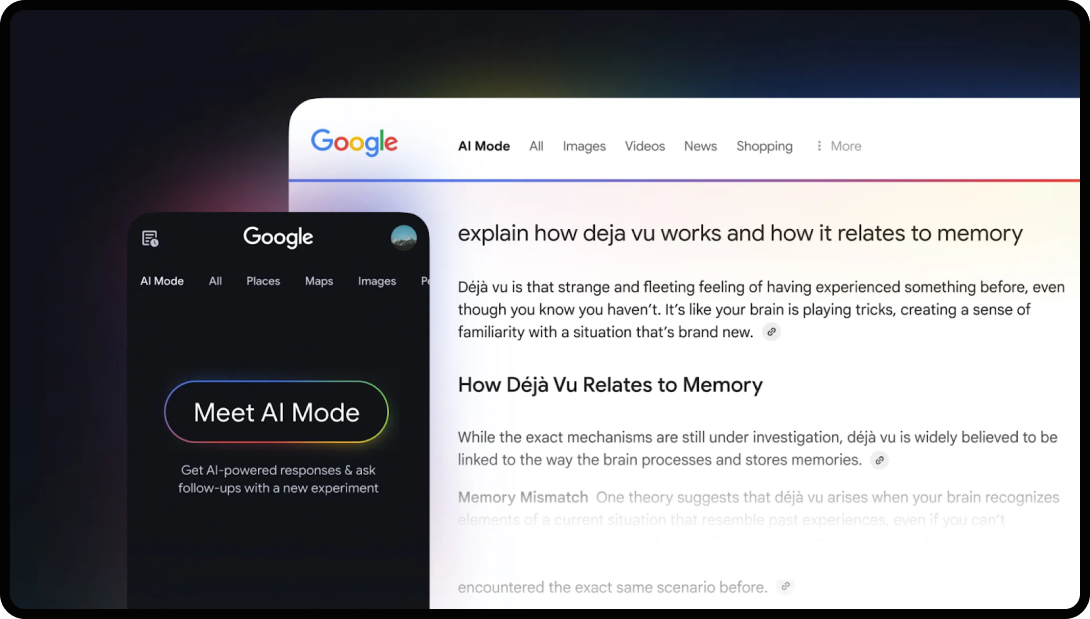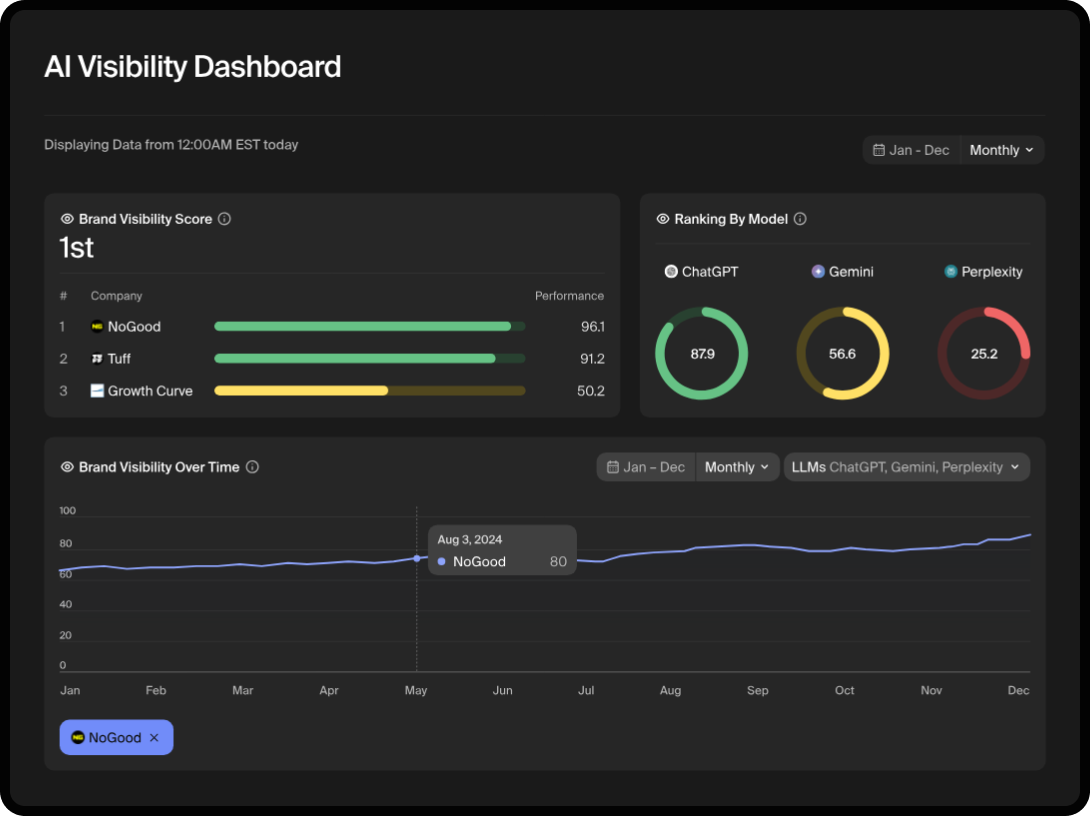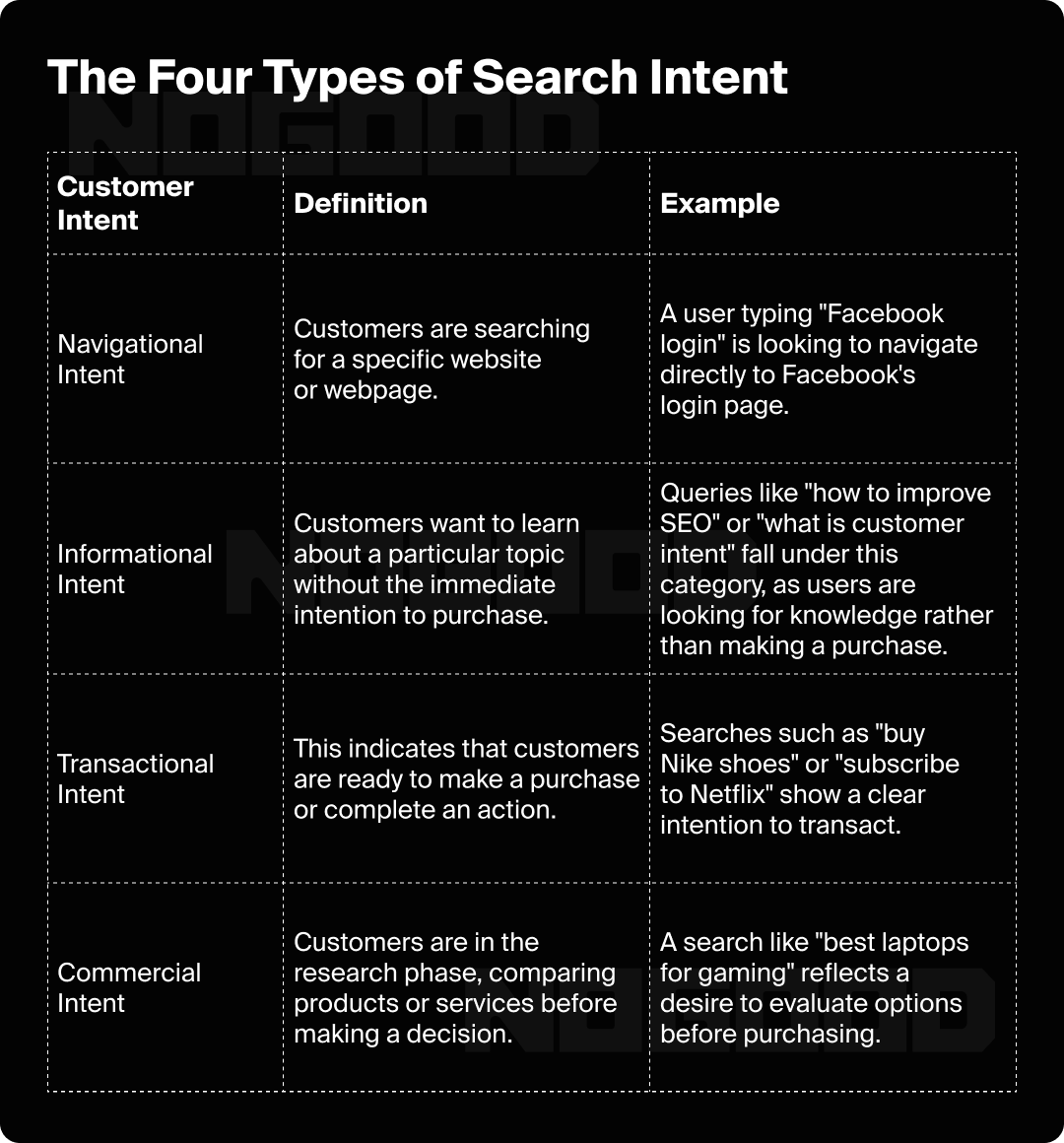A few months ago, you probably noticed that your Google Search Console (GSC) looked a little something like this:

Aptly nicknamed “The Crocodile Mouth Effect,” the widening gap between clicks and impressions was described by Darwin Santos as “the historic severing of the link between being found and being visited,” or “The Great Decoupling,” sending panic throughout the SEO world.
But now? Your GSC probably looks like this:

You’re most likely wondering (like the rest of us): what happened? Why did impressions and clicks suddenly level out?
This can be attributed to Google suddenly removing the num=100 parameter.
Essentially, Google retired the ability to view 100 results per page, forcing Ahrefs to readjust how they source data, and GSC showing a loss of impressions.
The TL;DR is this: Monitoring tools were running num=100, and now that the parameter doesn’t exist anymore, they’re only running the top 10 results, revealing the likelihood that your data has been inflated for years.
If you’re an SEO, you probably feel like everything is on fire right now, but think about it for a second.
Ahrefs, Semrush, GSC, and other critical trade tools were overcounting impressions, leading to a false understanding of your brand’s organic search performance.
While it might come as a shock that your impressions weren’t as high as you thought, look at it this way: your impressions are accurate now, and the playing field has been leveled.
Instead of operating under the false assumption of an overinflated performance, you’re now able to see the true picture of your brand visibility. This isn’t something to be mad at Google over; it’s actually something to celebrate.
Still, you’re probably wondering: where do I go from here? We hear you.
Admittedly, we’re still trying to figure out how to address all of these changes (along with the entire SEO world), but we’re gonna break things down for you and give you some things you can start to address.
What Is the Great Decoupling & Do I Still Need to Worry About It?
The term “decoupling” originates in economics, where it describes the point at which two trends or variables that once moved together begin to separate and evolve independently of each other.
You might have seen this concept before; during the 1980s, there was a “Great Decoupling” when national economic growth skyrocketed while wages remained stagnant. In the context of SEO, there have been comparable shifts in clicks and impressions throughout Q2 and Q3 of 2025.
For years, more searches for a topic meant more organic traffic for websites targeting that topic. However, this fundamental relationship has completely broken down.
The “Great Decoupling” in SEO described the growing gap between the increasing volume of search queries and the stagnant, or even declining, organic traffic to websites.
While we’re not seeing a “Great Decoupling” anymore, clicks are still down. The culprit? AI.
Users are still searching, but search engines are now answering many queries directly on the search engine results page (SERP) through AI Overviews, so no click is needed, a trend known as “zero-click searches.”
Why Are Clicks Down?
We said it once, and we’ll say it again: AI isn’t just the future of search; it’s here, now. With the rise of LLMs like ChatGPT, Gemini, and Perplexity, AI SERP features like AI Overviews, and the newly launched AI Mode, the way users search (and how they interact with results) has changed.
Zero-click searches play a large role in clicks declining: users get their answers directly on the SERP, no extra click required.
The timing lines up, too. You might have noticed that this trend accelerated after Google’s March 2025 core update, when (according to Ahrefs) the frequency of AI Overviews more than doubled, increasing by 116%. Since then, AI Mode has expanded to 180 countries and regions and already counts 100M active monthly users in the U.S. and India.
While it might be a bit too early to say that AI Mode is directly responsible for fewer clicks, given its scale, it’s safe to say that this new search experience is going to transform how people interact with search results.

The “Great Decoupling” and AI search were the running explanation for clicks being down, but also why impressions were up, as AI features give brands an extra opportunity to gain visibility beyond the traditional SERP. The theory was that people were seeing your content or brand, just not clicking on it.
The thing is, it’s likely that impressions were never actually up; they were just being overcounted as a result of the num=100 parameter running 100 results per page.
Do AI Citations Count as Impressions?
Yes and no; in GSC, an impression is recorded any time a URL appears in a user’s search results, regardless of whether the user scrolls down to see it or clicks on it. The key is that the URL is rendered somewhere on the page.
AI Overviews and the citations they provide follow this same rule. When a generative AI answer is displayed on the SERP and links back to your website, that counts as an impression. Even more, GSC is now counting clicks, impressions, and positions in AI Mode.
That being said, GSC can’t measure impressions (or visibility) in LLMs like ChatGPT, Perplexity, or Gemini, which should have been a red flag at the time. Search Console is a Google-only product, and its power therefore only extends into the Google search ecosystem.
If you do want to track LLM impressions, though, you’re gonna need a specialized tool like Goodie. Goodie monitors how often you’re cited across LLMs, analyzes the sentiment of the citation, and provides content updates to help you capture more citations.
An AI visibility tool like Goodie is crucial because GSC alone won’t show you the full picture of your brand. If you’re doing Answer Engine Optimization (AEO) (which you should be), but not tracking its results, you’re flying blind.

How Do I Fix Low Clicks & Impressions?
There are two things you need to accept: first, decreased clicks are here to stay, especially as AI Mode racks in more users, and OpenAI and Perplexity have released AI-powered browsers. Second, the removal of the num=100 parameter created a more accurate snapshot of your visibility, but it means you’re gonna need to work even harder to bring impressions back up.
With these two things in mind, we’ll give you some strategies to mitigate any negative effects.
1. Optimize to Earn High-Quality Impressions
Now that you’ve accepted your new reality, your goal is to ensure that your content is chosen to fill AI Overviews, AI Mode, People Also Ask boxes, and even LLMs. This requires you to structure your content not just for human readability, but for machine parsability.
- Answer Queries Directly: Within the first few sentences of a section, provide a concise, factual answer to the heading’s question. This is what AI models are looking for when they’re synthesizing content into summaries.
- Leverage Schema Markup: Implement schema like FAQPage, HowTo, and Article schema. This helps search engines and AI understand the context and purpose of your content, making it easier for them to feature you.
- Use Clear Formatting: Break up your content with logical subheadings, bullet points, and numbered lists. These formats are easy for Google and LLMs to pull and display in their AI features, making your content a prime candidate for citation.
2. Strengthen Your Authority & Brand Signals
You need to remember this: in an era where content can be summarized by AI, generic information is losing value. The content that wins is the content that demonstrates helpfulness, expertise, experience, authoritativeness, and trustworthiness (H-E-E-A-T).
- Create Unique Content: Ditch the rehashed blog posts and invest in original research, proprietary data, real-world case studies, and unique customer stories. This kind of content is difficult for AI to replicate and is a signal of your brand’s authority.
- Pursue High-Quality Citations: Seek out opportunities for digital PR and backlinks from other reputable sources. These signals boost your topical authority and make it more likely that your content will be cited as a trusted source by AI.
3. Pivot to High-Intent, Transactional Queries & Keywords
You’re probably losing clicks with top-of-funnel content, as this is the type of information that can be increasingly satisfied without a click. The good news is that this effect is much less common with transactional and commercial keywords, which indicate a user is ready to buy.

Your strategy here is to shift some of your SEO focus to these keywords with bottom-of-funnel content. While these types of keywords may have lower search volume than informational queries, their value per click is significantly higher because the user is closer to a conversion.
To capture this traffic, you should keep the Keyword Matrix in mind and focus on the following:
- Create Comparison & Review Content: Users searching for terms like “best project management software” or “[product name] vs. [competitor product name]” (think Wirecutter) are in the evaluation phase. Create detailed, unbiased comparison articles that directly address these queries. The inclusion of a clear comparison table, pros and cons, and a definitive recommendation can often win the click and the conversion.
- Optimize Product & Service Pages: Ensure your product and service pages are more than just a list of features. These pages should be built to answer specific, high-intent questions. Include FAQ sections, customer testimonials, and detailed specifications that anticipate users’ needs.
- Target “Near Me” & Local Queries: For businesses with a physical presence, “near me” searches are highly transactional and have a higher potential of resulting in a click. Optimize your Google Business Profile and create location-specific landing pages to capture this valuable local search traffic.
While you shouldn’t completely abandon your informational content, you need to place a renewed emphasis on creating and optimizing content that directly drives revenue.
4. Diversify Your Traffic Sources
Relying on a single source of traffic, especially one that is evolving as rapidly as organic search, is a risk. To build a more resilient marketing strategy, you have to expand your reach beyond Google.
- Build an Email List: This gives you a direct line of communication with your audience, bypassing the search engine entirely. Use your content to drive sign-ups for newsletters or exclusive guides.
- Leverage Social Media & Brand Communities: Engage with your target audience on platforms like LinkedIn, Reddit, or industry-specific forums. This is an effective way to build a community, establish your expertise, and drive traffic directly to your site.
- Create Other Content Formats: Consider producing podcasts, videos, and interactive tools. While these can be featured in search, they also build a loyal audience on platforms like YouTube and Spotify, reducing your dependence on Google.
Look at these changes as an opportunity to move beyond simplistic strategies and build a more trusted brand that wins across the entire search ecosystem.
Embrace the Chaos: Redefining SEO Success
We know this is a lot to take in, but don’t treat all of these changes as a threat to your brand. Instead, learn to work with it in the ways we described, as AI (and the removal of num=100) is here to stay and will continue to transform search.
And if you really feel like you’re about to drown amidst all these changes, our team of experts is here to help.





